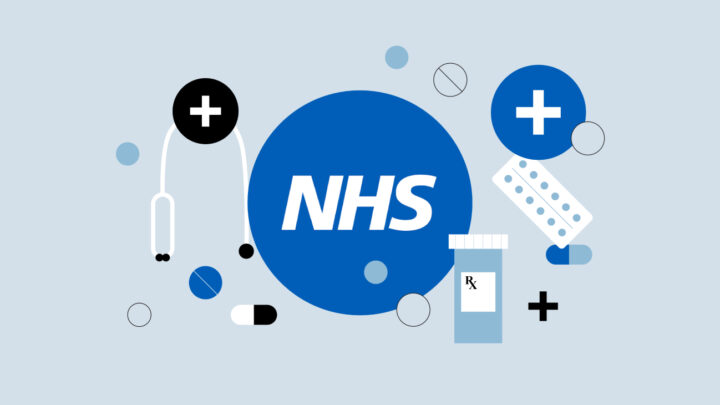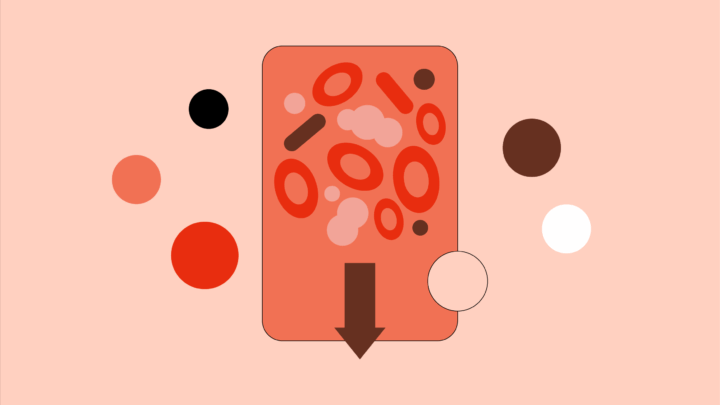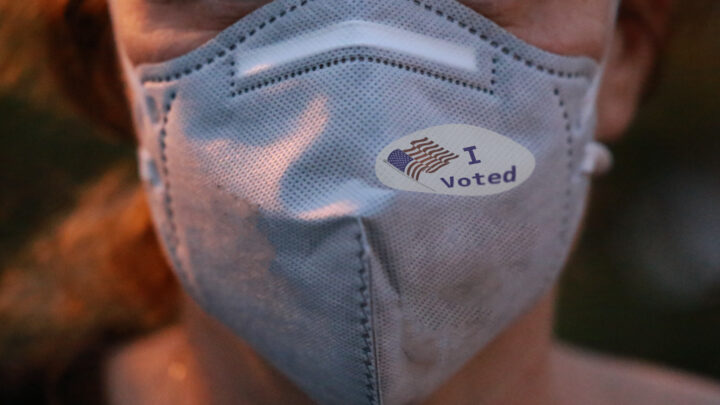
In a recent poll conducted by Sermo, 60% of physicians reported that the growing focus on wellness initiatives has increased their workload, while 40% said it had not.1 This disparity raises key questions: Why does this divide exist? Is there a way to continue promoting wellness while mitigating additional burdens on healthcare providers?
Preventative healthcare has been gaining momentum — the global preventive medicine market is projected to grow at a CAGR of 8.4% from 2023 to 20332, reshaping how medical professionals engage with patients. By emphasizing proactive care, patient empowerment and holistic treatments, the wellness revolution has shifted expectations1 across the healthcare landscape.
This article will examine the implications of these trends by analyzing poll data and insights from Sermo’s physician community. We’ll explore the challenges and benefits of preventative healthcare, discuss how it impacts physician workloads and consider what the future may hold for integrating wellness initiatives in a sustainable way.
What is the wellness revolution and why does it matter?
The wellness revolution represents a shift in healthcare towards preventative care, patient empowerment and holistic treatments.1 These principles aim to achieve efficient patient care, to reduce the burden of chronic diseases, encourage healthier lifestyles and integrate alternative approaches alongside traditional medical care.3
Preventative care
Physicians are increasingly focused on early interventions to prevent health care issues rather than just treating symptoms. However, while prevention is beneficial for long-term public health, some doctors feel that the incentives within healthcare systems remain skewed towards reactive treatment rather than proactive strategies.1
As a Sermo member for Family Medicine puts it, “We spend too much of our resources on treatment of disease. Specialists are rewarded for treating failed prevention. It should be the other way around. Prevention therapies should be prioritized.4”
Patient empowerment
Another significant component of the wellness revolution is encouraging patients to take control of their health.5 In theory, this leads to better self-care and lifestyle management. In practice, however, it requires additional effort from physicians to educate and guide patients effectively.
A GP in the Sermo community emphasizes this shift, stating, “It’s prompted me to focus more on prevention and empowering patients to actively participate in their health, promoting healthy habits and self-care.4”
Holistic treatments
The concept of holistic healthcare has gained traction, integrating physical, emotional and mental well-being into patient care. The global wellness market is projected to see a 7% annual growth from 2020-2025.6 While this approach has potential benefits, it also introduces complexities when balancing traditional medical treatment with complementary therapies.
A GP Sermo member highlights this shift: “There’s a growing emphasis on mental, emotional and physical well-being, encouraging healthcare providers to adopt a more comprehensive approach to patient care.4”
Physician perspectives: a mixed reaction
When Sermo physicians were asked how they perceive the wellness revolution:
- 50% said it enhances patient outcomes and physician satisfaction.
- 38% felt neutral, recognizing both benefits and challenges.
- 7% viewed it negatively, citing increased pressure and complications in care.
- 5% remained uncertain.1
Half (50%) of surveyed physicians view it positively, citing improved patient outcomes and satisfaction. As one GP on Sermo explains, this shift has allowed him to approach healthcare more holistically, where well-being is seen as a balance of body, mind and spirit rather than just the absence of disease.4 Similarly, a Urologist on Sermo describes this transformation as “helping to reduce healthcare costs in the long run4” by shifting the focus from treating illness to preventing it.
However, 38% remain neutral, acknowledging both advantages and practical challenges. A GP Sermo member notes that while prevention is essential, it “may lead to unfounded consultations,4” particularly as patients misinterpret health data from consumer devices.”
Skepticism is also present: 7% of physicians see a wellness problem as the trend oversimplifies treatment and adds pressure to clinical workloads. A Rheumatologist on Sermo warns that while wellness solutions can complement care, they shouldn’t replace evidence-based medical management.4
Another 5% remain uncertain, signaling that while the movement is growing, its full impact is still unfolding.
The pros and cons of the wellness revolution in healthcare
Changing patient experience: are patient expectations becoming unrealistic?
One of the most significant shifts has been greater patient engagement, a seeming positive given the behavioral determinants of health.7 Nearly half (49%) of physicians acknowledge that patients are more proactive about their health,1 leading to better-informed consultations and collaborative decision-making.
A GP on Sermo reflects on this, stating, “The wellness revolution has made patients more proactive about their health, which opens the door for meaningful conversations and personalized care.4”
However, this medical empowerment sometimes leads to unrealistic expectations. Physicians report that patients often misunderstand wellness trends, leading to misinformation and misplaced trust in alternative treatments.
A Pediatrist on Sermo warns, “Patients are very interested in natural medicine, homeopathy and botany, often creating false expectations of magical solutions to their ailments.4”
Balancing empathy with evidence-based guidance may help bridge the gap between wellness trends and medical reality.
More treatment options: holistic approaches vs. traditional medical care
While some physicians see expanded treatment options as beneficial, others struggle to balance them with conventional approaches.
- 28% believe the integration of holistic treatments has improved patient care.
- 23% find it difficult to balance wellness initiatives with traditional medical care.1
Physicians incorporating complementary therapies into practice note positive outcomes.
A GP on Sermo shares, “I’ve integrated complementary therapies, such as acupuncture or meditation, which enhance conventional treatments and improve the patient’s general well-being.4”
However, some wellness trends conflict with evidence-based medicine.
An Internal Medicine Sermo member warns, “I’m all for patients taking an active role in their health, but far too often they believe too strongly in TV and health misinformation. For example, using cannabis to treat diabetes over insulin/metformin.4”
The key challenge is finding balance between holistic, personalized approaches and evidence-based medicine. A GP on Sermo suggests integrating complementary therapies alongside conventional treatments,4 while an Internal Medicine Sermo member highlights the need for patient education to counter misinformation and reinforce medical guidance.4
Awareness of burnout and mental health: how preventative wellness trends affect physicians’ workloads
Increased emphasis on physician well-being (11%)1
While the wellness movement has highlighted mental health awareness, many physicians feel the systemic support is lacking.
One GP on Sermo notes that a positive outcome of this shift is greater recognition of psychological trauma’s impact on health, leading to more engaged patients.4
However, another GP points out that while well-being is widely discussed, tangible improvements remain minimal.4
Furthermore, a Neurologist on Sermo underscores the expectation that physicians endure high stress without adequate support, a concern echoed across the profession.4
So, while awareness of physician well-being is growing, meaningful systemic changes are still needed to provide real support, reduce burnout and ensure that wellness initiatives translate into actionable improvements rather than just discussions.
Increased administrative tasks (21%)1
Physicians also cite burnout from excessive paperwork. For example, a Family Medicine doctor on Sermo argues that wellness initiatives often result in more meetings and documentation, rather than real solutions.4
Wellness initiatives must prioritize efficiency, ensuring they reduce administrative burdens rather than adding to them so that physicians can focus on patient care instead of excessive paperwork.
Lack of time or resources (11%)1
Physicians recognize the value of wellness strategies but struggle to integrate them due to time constraints. For example, an Obstetrics physician on Sermo highlights how leadership-driven documentation demands further erode patient care time.4
To make wellness sustainable, delegation, ambassadors and technology-driven solutions may help mitigate workload pressures.
What’s next? The future of physician-led wellness
How will the wellness revolution shape healthcare?
When asked about the future of wellness in patient care healthcare:
- 41% said it’d lead to better patient outcomes and job satisfaction.
- 41% saw both opportunities and challenges.
- 11% believed it’d increase physician burdens.
- 7% were uncertain.1
Some physicians are hopeful that collaborative care models will provide better solutions. An example of this comes from an Internal Medicine physician who states on Sermo, “Working as a team and not as a solitary doctor always benefits the patient and the professional.4”
However, others worry about the growing demands on physicians.
One GP on Sermo cautions, “The wellness revolution is a major aim, but mostly demanding. The challenge is to find a way to assign time and money to achieve this goal.4”
Your takeaway
The wellness revolution is profoundly reshaping patient care, emphasizing prevention, empowerment and holistic health.
While many physicians appreciate the benefits of proactive healthcare, others cite health and wellness concerns, feeling overwhelmed by the added workload, unrealistic patient expectations and administrative tasks.
Moving forward, the challenge will be integrating wellness initiatives to align with evidence-based medicine to support patient desires and health and physician well-being.
By refining approaches, using technology and fostering interdisciplinary collaboration, healthcare systems can strike a balance, ensuring preventative care enhances rather than hinders medical practice.
Join the conversation on Sermo
The wellness revolution is reshaping healthcare, but how do physicians navigate its challenges while ensuring high-quality patient care?
Sermo is where physicians worldwide discuss real-world impacts, share experiences and find practical solutions. Join the discussion, access exclusive poll insights and connect with peers who understand the complexities of modern healthcare.
Footnotes
- Sermo, 2024. Poll of the Week: Navigating the Wellness Revolution in Healthcare [Poll]. Sermo Community.
- Future Market Insights, 2024. Preventive Medicine Market Report.
- WorldClinic, 2024. Benefits of preventive health.
- Sermo member, 2024. Comment on Poll of the Week: Navigating the Wellness Revolution in Healthcare [Poll]. Sermo Community [Private online forum].
- Thiruvengadam SK, Ashvetiya T, Stone NJ, Blumenthal RS, Martin SS. Shared Decision-Making and Patient Empowerment in Preventive Cardiology. Curr Cardiol Rep. 2016 May;18(5):49. doi: 10.1007/s11886-016-0729-6. PMID: 27098670.
- Business Gateway, 2023. Market Report: Alternative & Complementary Therapy.
- Short SE, Mollborn S. Social Determinants and Health Behaviors: Conceptual Frames and Empirical Advances. Curr Opin Psychol. 2015 Oct;5:78-84. doi: 10.1016/j.copsyc.2015.05.002. PMID: 26213711; PMCID: PMC4511598.















